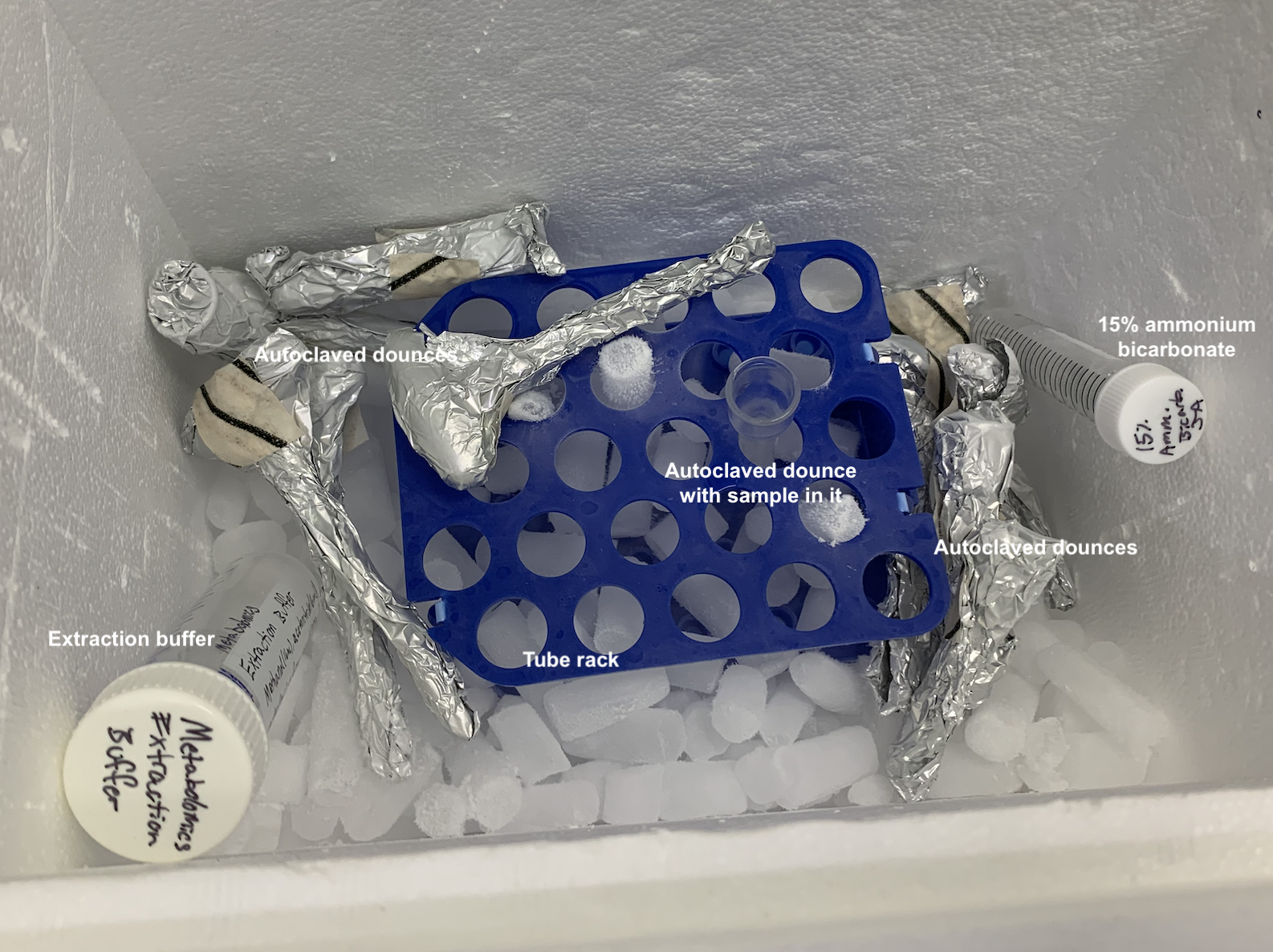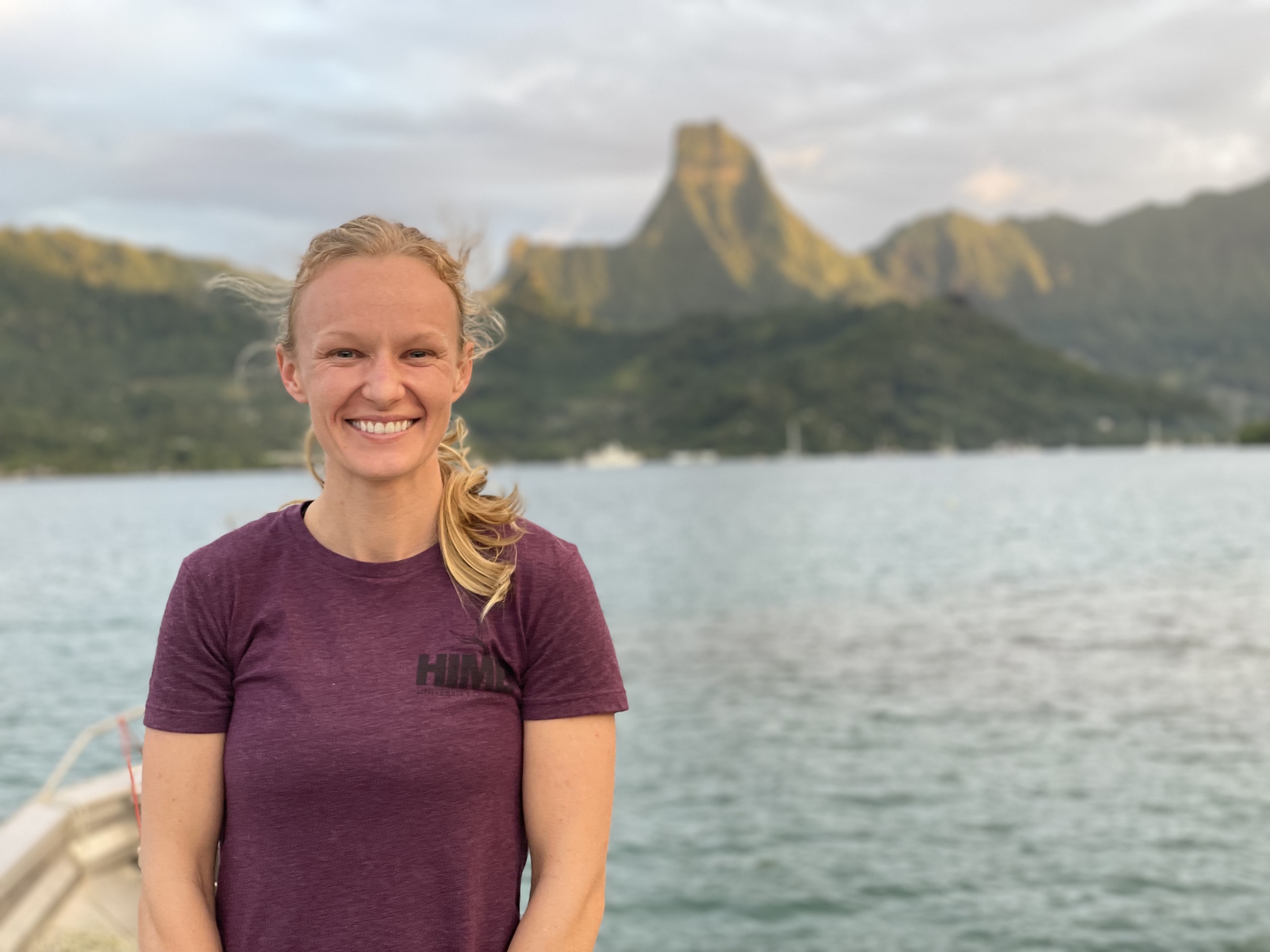Coral Metabolomics Extraction and Preparation Protocol for 2023 Moorea Project
This post details protocols for metabolite extraction and preparation for analysis in the 2023 Moorea Symbiotic Nutritional Exchange project.
Host and symbiont separation
Separating host, holobiont, and symbiont fractions for metabolomics
This step is done on all samples prior to metabolomic extractions.
This protocol details the separation of host and symbiont fractions from coral larval and recruit samples. Host factions will be used for metabolite extraction. Protocols were developed by KW, AH, and JA and this protocol is based off of Ariana’s previous stable isotope metabolomics extraction protocol.
The samples used in this separation are from A. Huffmyer’s 2023 Moorea Symbiotic Exchange project on GitHub here.
Equipment & materials
- 1.5 mL tubes
- Homogenizer
- P1000 + tips
- 10% bleach
- 70% ethanol
- DI water
- Dry ice
Protocol
Before starting, label the required tubes. For each biological sample (indicated by “ID”), label one of each of the following tubes:
1.5mL tubes:
- ID (recruits only)
- ID-Host
- ID-Sym
Conduct separations in the following order:
- C12 controls
- C13 dark
- C13 light
Throughout, it is critical to use gloves and clean work spaces to prevent any C13 residues from being left on lab spaces or equipment.
Larval Samples
- Thaw sample (2 mL screw cap tube with larvae) on dry ice.
- Add 300 uL of ice cold DI water to sample.
- Homogenize the sample for 1 minute on ice (or until larvae are completely homogenized). Use the homogenizer tip to get all the larvae from the sides of the tube.
- Sonicate sample briefly (<30 sec).
- Remove the homogenate and place into new tube (ID-Sym)
- This will be around 300-350 uL of liquid. The volume will be variable because there may be excess seawater in the larval samples.
- Spin the “Sym” tube at 9000g for 3 minutes at 4°C.
- Make sure the homogenate in the “Sym” tube is liquid (as opposed to slushy) prior to centrifuging.
- If supernatant is cloudy after centrifugation, spin again for 1 minute.
- Remove the supernatant and place into new tube (ID-Host)
- This will be around 150-300 uL of liquid.
- Store at -80°C.
- The “Sym” tube now only contains a symbiont pellet.
- Add 150uL of DI water to the tube with the symbiont pellet. Store at -80°C.
- All sample fractions (Host, Sym) can be stored “Pre-Processing” freezer box in the -80°C.
- Critical!!!! In between samples, clean the homogenizer to prevent cross-contamination
- Wipe the motor with a kim wipe
- Clean the motor (in this order) with DI water, 10% bleach, 70% ethanol, DI water
- Wipe the motor with a kim wipe
- Clean the motor in between samples and refresh all washes in between sample types
Recruit Samples
- Thaw sample (fragment in whirl pack) on dry ice.
- Use clippers to scrape tissue off of the skeleton and add to a new, labeled tube.
- Add 300 uL of ice cold DI water to sample in the new tube.
- Homogenize the sample for 1 minute on ice (or until tissue is completely homogenized). Use the homogenizer tip to get all the sample from the sides of the tube.
- Sonicate sample briefly (<30 sec).
- Remove the homogenate and place into new tube (ID-Sym)
- This will be around 300-350 uL of liquid. The volume will be variable because there may be excess seawater in the samples.
- Spin the “Sym” tube at 9000g for 3 minutes at 4°C.
- Make sure the homogenate in the “Sym” tube is liquid (as opposed to slushy) prior to centrifuging.
- If supernatant is cloudy after centrifugation, spin again for 1 minute.
- Remove the supernatant and place into new tube (ID-Host)
- This will be around 150-300 uL of liquid.
- Store at -80°C.
- The “Sym” tube now only contains a symbiont pellet.
- Add 150uL of DI water to the tube with the symbiont pellet. Store at -80°C.
- All sample fractions (Host, Sym) can be stored “Pre-Processing” freezer box in the -80°C. Return the skeleton and remaining tissue to the -80°C freezer.
- Critical!!!! In between samples, clean the homogenizer to prevent cross-contamination
- Wipe the motor with a kim wipe
- Clean the motor (in this order) with DI water, 10% bleach, 70% ethanol, DI water
- Wipe the motor with a kim wipe
- Clean the motor in between samples and refresh all washes in between sample types
Metabolite extractions
Throughout, it is critical to use gloves and clean work spaces to prevent any C13 residues from being left on lab spaces or equipment.
Equipment & materials
- 2 mL dounces
- 11 mm Snap Cap tubes
- 11 mm Snap Cap auto sampler vials
- 100um cell strainer
- Methanol
- Acetonitrile
- Formic Acid
- Water
- 1.5 mL tubes
- Dry ice
- P1000, P200 + tips
- 10% bleach
- 70% ethanol
- DI water
- Alkaline soap
Prior to extractions, autoclave all glassware.
Protocol
Prepare supplies
- Label tubes required
- Label autosampler vials
- Autoclave glassware (dounces and pestles)
Make reagents
Prepare reagents according to KW’s protocol.
Extraction Buffer (500 µL per sample; make ~40 mL for this set of 60 samples to have extra to work with)
This extraction buffer is a ratio of 40:40:20 of methanol, acetonitrile, and water, with 0.5%[v/v] Formic Acid. Store at 4°C in a non-flammable fridge.
- For a total of 40mL extraction buffer:
- 16 mL methanol
- 16 mL acetonitrile
- 8 mL LC grade water
- 0.2 mL formic acid
15% Ammonium Bicarbonate Solution (44 µL per sample; make ~5 mL for this set of samples)
The solubility of Ammonium bicarbonate in water is: 220g/L for 100%. After solutions are prepped, tore at 4°C in a non-flammable fridge
- To make 100% Ammonium Bicarbonate solution (25 mL):
- 5.5g dry Ammonium bicarbonate
- 25 mL LCMS water
- To make 15% Ammonium Bicarbonate Solution (5 mL):
- 0.75 mL of 100% Ammonium Bicarbonate Solution
- 4.25 mL LCMS water
Metabolite extractions
Prior to starting, label the following tubes for each sample fraction to intend to extract. Here, “ID” indicates the biological sample ID. For all samples in this protocol, we are moving forward with extractions from the host fraction only.
1.5mL tubes (2 per sample):
- ID-A
- ID-B
Autosampler vials (2 per sample):
- ID-A Date Initials
- ID-B Date Initials
CRITICAL: Conduct sample extraction in the following order of sample groups: (1) C12 control samples, (2) C13 Dark samples, (3) C13 light/experimental samples. This will ensure that we reduce the likelihood of contamination of labeled metabolites between groups.
- Autoclave all glasseware prior to extractions
- Clean all equipment with 10% bleach, 70% ethanol and DI water. Refresh cleaning solutions between sample groups.
- Thaw sample on dry ice if using frozen homogenized fractions. Homogenize and spin if sample has debris. At a minimum, vortex sample to mix before extractions.
- Add sample to ice cold dounce with 500 uL of ice cold extraction buffer. Record how much sample volume is added to dounce. Pipette up/down to make sure all host material is removed from tube.
- Let sample sit on dry ice in the dounce with extraction buffer for 5 minutes.
- Homogenize sample on dry ice for 1 minute with the dounce.
- The sample may freeze over the 5 minutes. If that happens, continue to dounce until it unfreezes then start the 1 minute homogenization.
- After homogenization, put glassware in a cup of 10% alkaline soap.
- Transfer extract to new 1.5 mL tube (Tube ID-A).
- Centrifuge for 10 minutes at 15,000g at 4°C.
- Remove 500 uL of the supernatent to new 1.5 mL tube (Tube ID-B).
- Add 44 uL of 15% ammonium bicarbonate. Vortex and spin down in bench-top centrifuge.
- Add 100 uL from Tube B into duplicate labeled autosampler vials (ID-A and ID-B).
- Store the two 1.5 mL extract tubes (A & B) and the two autosampler vials at -80°C in the “Post-extraction” freezer box.
- Clean equipment with 10% bleach, 70% ethanol and DI water between every sample. Rinse the dounces with water. Autoclave all dounces and glassware for next extraction/next day.
Pictures of extraction set-up from Jill’s previous work.


Samples are now ready to ship on dry ice for analysis at Rutgers.


